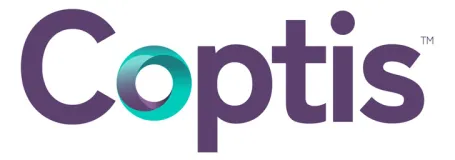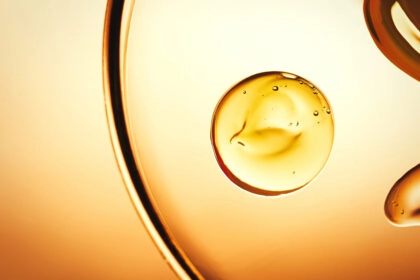DIP cosmétique : définition et bonnes pratiques
Le Dossier d’Information Produit (DIP) est un document indispensable pour assurer la sécurité et la conformité d’un produit cosmétique. Il centralise de nombreuses informations essentielles, et répond à une obligation légale pour la commercialisation du produit (Règlement européen 1223/2009).

Cependant, la constitution de ce dossier peut s’avérer complexe ! Elle exige une préparation minutieuse et de nombreux échanges avec des interlocuteurs variés. Dans cet article, nous vous fournissons les bonnes pratiques à mettre en oeuvre pour élaborer votre DIP cosmétique.
DIP cosmétique : de quoi s'agit-il ?
Le Dossier d’Information Produit (ou Product Information File – PIF en anglais) est conçu pour garantir qu’un produit cosmétique est sûr pour ses utilisateurs, et qu’il respecte les normes en vigueur. C’est un document obligatoire pour tout produit introduit sur le marché européen. Présenté au format papier ou au format électronique, il agit comme une véritable carte d’identité du produit et regroupe toutes les informations le concernant.
Le DIP cosmétique accompagne le produit tout au long de son cycle de vie, voire même au-delà. En effet, le dossier doit être conservé pendant 10 ans après la mise sur le marché du dernier lot du produit concerné. Durant cette période, il doit être disponible pour répondre à toute demande formulée par les autorités. C’est à la personne responsable qu’incombe cette responsabilité.
La Personne Responsable : quel est son rôle ?
Selon l‘article 4 du Règlement, la désignation d’une Personne Responsable est obligatoire pour commercialiser un produit cosmétique. Établie dans l’UE, elle peut être une personne physique ou morale : le fabricant, l’importateur, ou le distributeur par exemple.
Afin d’assurer la sécurité du produit vis-à-vis de ses consommateurs, la Personne Responsable joue un rôle central : elle est garante de la conformité du Dossier d’Information Produit par rapport au règlement.
Comme évoqué précédemment, la Personne Responsable doit aussi s’assurer de la disponibilité du DIP : il doit être accessible aux autorités de contrôle en cas de demande. Pour ce faire, l’étiquette du produit doit indiquer l’adresse où le dossier peut être consulté. Si plusieurs adresses sont mentionnées, celle correspondant à l’emplacement du DIP doit être soulignée. De plus, le DIP doit être rédigé dans une langue que les autorités de contrôle du pays concerné peuvent comprendre aisément.
Durant le cycle de vie du produit, la Personne Responsable veille également à ce que le dossier soit mis à jour, si nécessaire.
Quelle est l'importance du DIP ?
Le DIP répond à une obligation légale. Le dossier est imposé par le règlement n°1223/2009.
Assurer son exhaustivité et la pertinence des informations est incontournable pour garantir la sécurité des produits, leur conformité réglementaire et permettre leur commercialisation. Le non-respect des obligations relatives au DIP peut entrainer des sanctions importantes telles que des amendes, le retrait des produits du marché ou des poursuites judiciaires.
Structure et contenu du DIP
Chaque Personne Responsable est libre d’organiser le dossier et de personnaliser sa structure à sa guise. Cependant, certains éléments obligatoires doivent impérativement y être renseignés.
Éléments obligatoires du Dossier d'Information Produit
Le Règlement précise les informations requises. Les voici :
- La description du produit cosmétique : cette description doit permettre de faire le lien entre le produit et le Dossier d’Information Produit. On y retrouve des informations telles que le nom, la référence et la marque, la catégorie du produit, sa description, etc.
- Le rapport sur la sécurité du produit cosmétique (également appelé RSPC ou évaluation de la sécurité) : ce rapport est la composante majeure du DIP. Il comporte deux grandes parties, et plusieurs sous-catégories qui seront détaillées un peu plus tard dans cet article.
- La description de la méthode de fabrication et la déclaration de conformité aux bonnes pratiques de fabrication (BPF) : cette partie du DIP démontre que le produit est fabriqué conformément aux normes de qualité établies. Les BPF désignent des exigences pratiques et organisationnelles qu’il est nécessaire de respecter lors de la fabrication du produit, telles que la norme ISO 22716.
- Les preuves de l’effet revendiqué : des résultats d’études et des données qui confirment que le produit remplit ses promesses.
- Données relatives à l’expérimentation animale : cette partie regroupe les informations relatives aux expérimentations animales réalisées, le cas échéant. Ces tests peuvent être requis pour l’exportation vers certains pays tiers.
Zoom sur : le rapport sur la sécurité du produit cosmétique
Le rapport sur la sécurité du produit cosmétique est la pièce majeure du DIP cosmétique. En accord avec le Règlement européen, l’évaluation doit être réalisée par un expert qualifié.
Contenu du rapport sur la sécurité du produit cosmétique
L’évaluation de la sécurité se divise en deux grandes parties : la Partie A et la Partie B, chacune comprenant des informations spécifiques.
Partie A : Informations sur la sécurité du produit cosmétique
Cette première partie du rapport fournit une vision d’ensemble pour évaluer la sécurité du produit. Elle est dédiée à la description du produit et de ses différents ingrédients.
- La formule qualitative et quantitative : cette section comprend la liste exhaustive des ingrédients, ainsi que leur identification, leur concentration précise et leurs fonctions prévues. Les matières premières sont détaillées si nécessaire et les allergènes soumis à une déclaration obligatoire sont spécifiés.
- Les spécifications physiques et chimiques des matières premières et du produit fini : ces propriétés permettent notamment le contrôle physico-chimique du produit après son introduction sur le marché.
- Les données de stabilité : les résultats des tests effectués ainsi que la méthode suivie.
- La qualité microbiologique : les spécifications microbiologiques sont détaillées, ainsi que les résultats du challenge test, le cas échéant. Une vigilance accrue est accordée aux produits s’utilisant autour des yeux, sur les muqueuses ou sur des zones de peau endommagée. Également lorsque cela concerne des enfants de moins de trois ans, des personnes âgées, ou celles ayant un système immunitaire affaibli.
- Les impuretés et traces des matières premières : les niveaux d’impuretés dans les substances et les mélanges utilisés dans le produit cosmétique. Si des traces de substances interdites sont présentes, il est nécessaire de fournir des preuves que leur présence est techniquement inévitable.
- Les informations sur le matériau d’emballage : ces données doivent permettre d’évaluer les interactions possibles entre le produit et son matériau d’emballage.
- L’utilisation normale et raisonnablement prévisible du produit : la description de l’utilisation attendue du produit dans des conditions normales par les utilisateurs. Les usages possibles sont considérés en fonction des avertissements et explications figurant sur l’étiquetage.
- L’exposition au produit cosmétique : ces informations concernent par exemple le type de produit, la durée et la fréquence d’application, la quantité de produit à utiliser et les zones d’application. La possibilité d’exposition secondaire, telle qu’une inhalation involontaire, doit également être mentionnée.
- L’exposition aux substances contenues dans le produit cosmétique : les données relatives à l’exposition des utilisateurs aux substances, cela peut également concerner les traces et les impuretés présentes dans le produit.
- Le profil toxicologique des substances : une attention particulière est portée à l’évaluation de la toxicité locale, la sensibilisation cutanée, et la toxicité photo-induite.
- Les effets indésirables : particulièrement lorsque la formule est déjà sur le marché, comme ce peut être le cas d’un produit marque blanche.
- Les tests de tolérance et tout autre résultat de test pouvant être pertinent.
- Toute autre information nécessaire sur le produit.
Partie B : Évaluation de la sécurité
Si les informations présentes dans la partie A peuvent par exemple être rédigées par la Personne Responsable, la partie B est l’oeuvre de l’évaluateur de sécurité. Il analyse les informations recueillies dans la première partie et formule une conclusion quant à la sécurité du produit. Il peut notamment émettre des réserves qui conduisent à des instructions d’utilisation complémentaires à ajouter.
Voici plus en détail le contenu de la partie B du rapport sur la sécurité du produit cosmétique, conformément à l’Annexe 1 du Règlement relatif aux produits cosmétiques :
- Conclusion de l’évaluation de la sécurité : l’indication de l’évaluateur relative à la sécurité du produit pour l’usage prévu.
- Avertissements et instructions d’utilisation : des recommandations sur les précautions à prendre lors de l’utilisation et les avertissements à inclure sur l’étiquette pour assurer une utilisation sûre du produit.
- Raisonnement scientifique : une explication détaillée justifiant la conclusion de sécurité (point 1), en intégrant toutes les données et analyses présentées.
- Les références de l’évaluateur de la sécurité et approbation : les coordonnées, les qualifications et l’expérience professionnelle de la personne en charge de l’évaluation, ainsi que la date et la signature du document.
| Qui est l’évaluateur de la sécurité ? L’évaluation de la sécurité doit être effectuée en toute indépendance par un évaluateur de sécurité qualifié, avec un diplôme ou un titre justifiant son expertise : pharmacie, toxicologie, médecine ou dans une discipline semblable. |
DIP cosmétique : les bonnes pratiques et erreurs à éviter
La bonne tenue du Dossier d’Information Produit (DIP) est essentielle pour assurer la sûreté et la conformité de son produit cosmétique. Voici quelques bonnes pratiques à adopter pour garantir que votre DIP est complet et précis.
Ne pas attendre le dernier moment
Puisque la constitution du DIP intègre divers interlocuteurs et nécessite de nombreux échanges de documents, il est préférable de ne pas s’y prendre au tout dernier moment ! Soyez proactif et intégrez toutes les parties prenantes au plus tôt, dans la mesure du possible, afin d’obtenir les bonnes informations dans les meilleurs délais.
Le document peut ainsi être complété progressivement, en suivant l’avancement du projet.
Organisez le document de manière claire et lisible
Le DIP peut être contrôlé à tout instant par les autorités compétentes, il est alors important de le rendre le plus organisé et le plus clair possible. Structurez le document de manière logique, avec des sections distinctes et bien définies, et veillez à présenter les informations avec précision. Assurez-vous que toutes les informations requises sont bien présentes dans le document, et qu’elles sont correctement documentées. Un document bien structuré facilite la compréhension et l’accès aux informations pour les autorités de contrôle.
Par ailleurs, n’oubliez pas de garantir sa disponibilité à chaque instant et de le rédiger dans la langue appropriée !
Maintenez votre DIP à jour régulièrement
Le Dossier d’Information Produit n’est pas un document figé dans le temps. Il évolue et doit être régulièrement actualisé pour s’adapter aux évolutions du produit et aux réglementations. Divers facteurs peuvent le faire évoluer tels que le respect de nouvelles exigences, un changement dans la méthode de fabrication, l’utilisation d’un emballage différent, la modification des coordonnées de la Personne Responsable, etc.
Si les modifications apportées au produit sont significatives, et qu’elles sont susceptibles d’altérer sa sécurité, il peut être nécessaire de procéder à une nouvelle évaluation de la sécurité. L’évaluateur doit alors être consulté pour déterminer si, oui ou non, le rapport nécessite d’être actualisé en fonction des informations les plus récentes.
En parallèle, le suivi des incidents liés aux produits cosmétiques doit régulièrement être documenté dans le Dossier d’Information Produit. Cela comprend le ratio entre le nombre d’effets indésirables signalés et le nombre de produits vendus chaque année. Cette vigilance permet d’évaluer continuellement la sécurité du produit sur le marché.
Utilisez des solutions adaptées
L’utilisation de logiciels de formulation et de conformité réglementaire peut grandement faciliter la constitution d’un DIP cosmétique. Ces outils permettent par exemple de centraliser et de sécuriser vos données, de collaborer efficacement, d’assurer la traçabilité et la transparence, d’automatiser des alertes pour suivre les évolutions réglementaires, de générer des rapports en un clic, etc.
Comment Coptis vous accompagne
Coptis Lab est un logiciel intégré pour la formulation cosmétique et la conformité réglementaire. Il vient en aide à l’industrie cosmétique pour gérer les projets de développement de manière plus efficace, réduire le time to market et améliorer la qualité et la fiabilité des informations.
Comment ?
- En permettant d’être proactif à chaque étape de développement.
- En centralisant toutes les données et documents dans une solution unique.
- En dynamisant la collaboration entre les équipes à travers une interface intuitive et ergonomique.
- En gagnant du temps grâce à l’automatisation de certaines tâches fastidieuses comme la génération du DIP en un clic.
- En assurant la conformité globale de vos formules, par la centralisation des réglementations et des alertes réglementaires en temps réel, afin d’éviter les retours en arrière.
Plus ressources qui pourraient vous plaire





